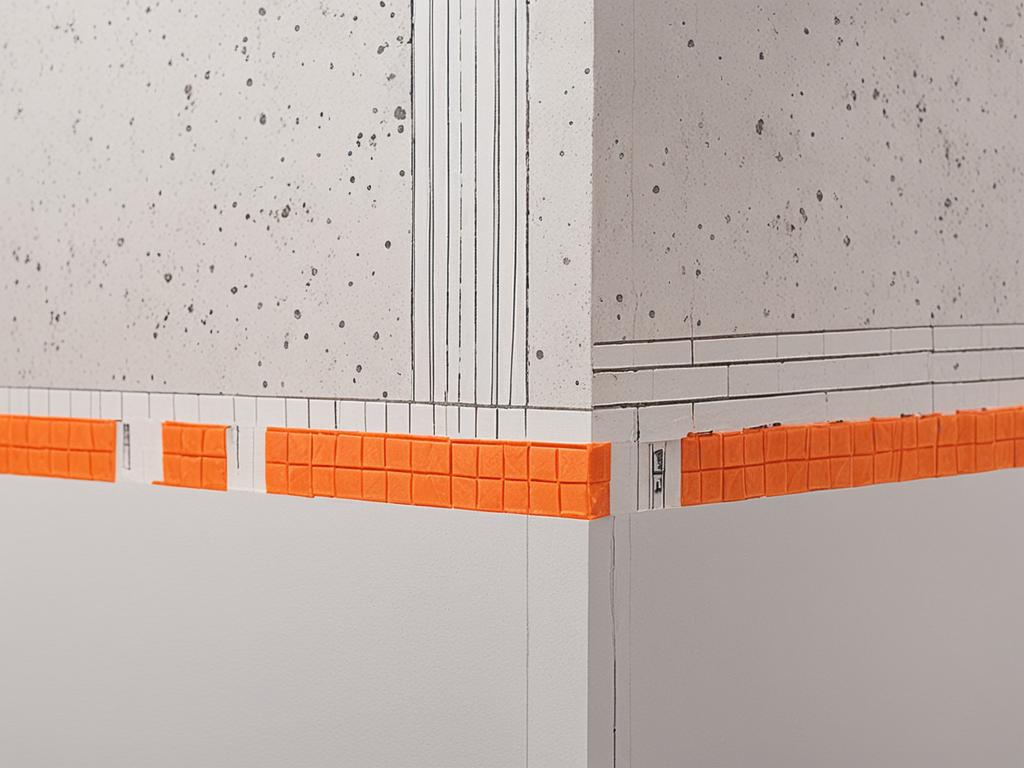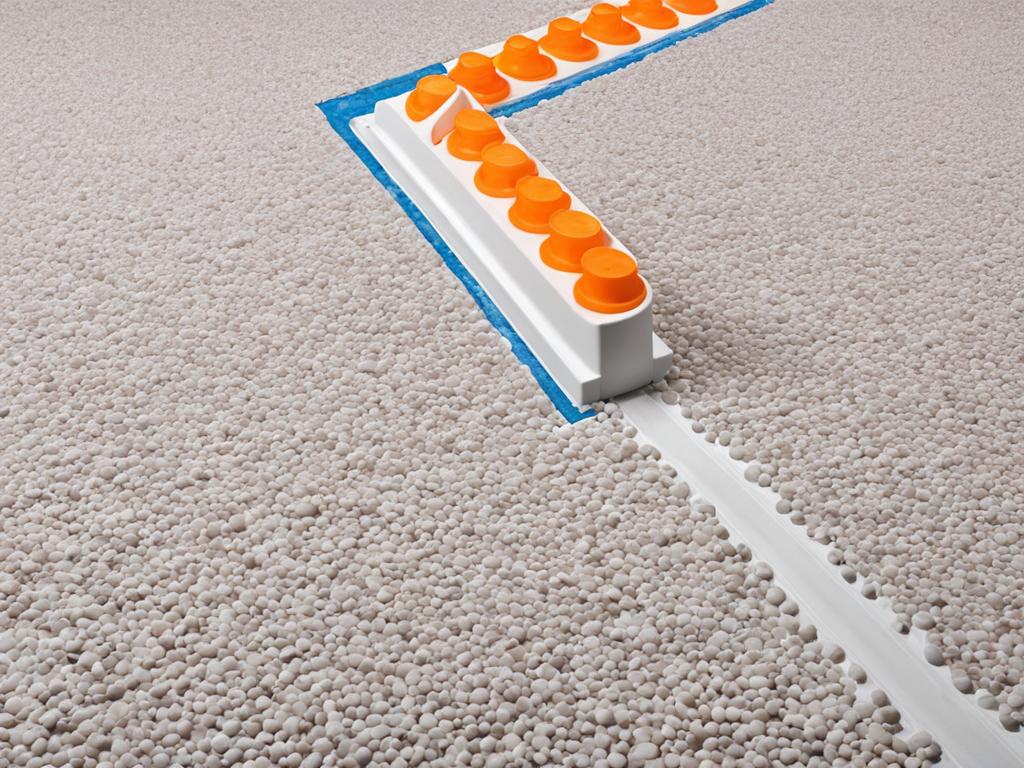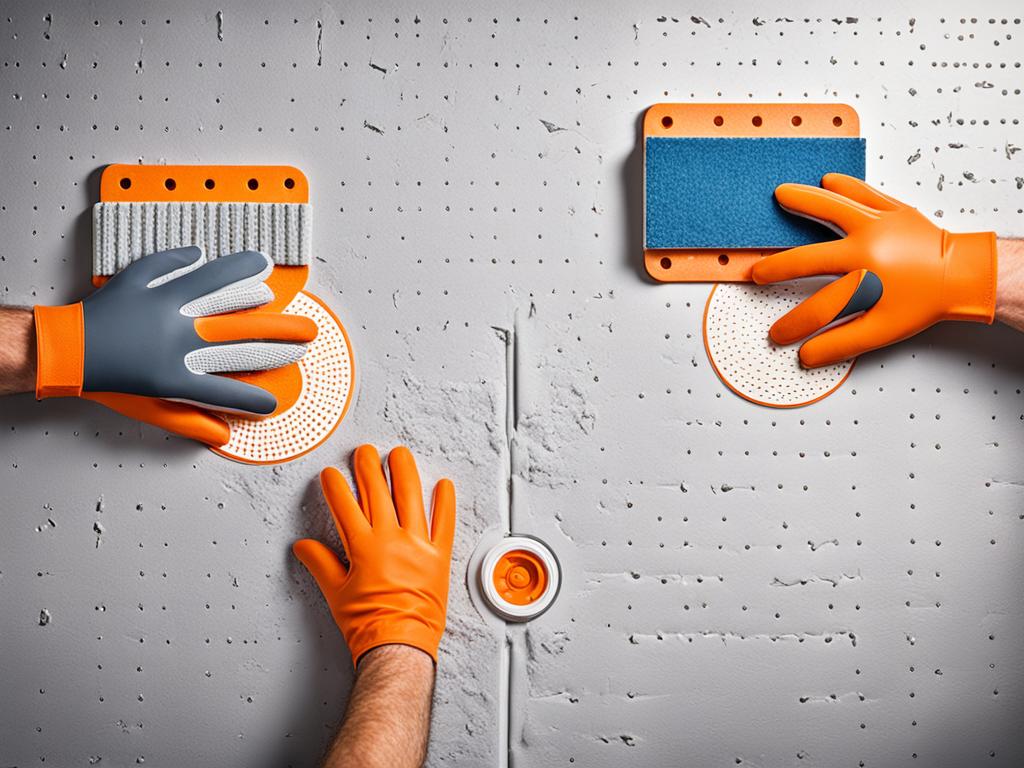When it comes to waterproofing your bathroom remodel, the choice between Kerdi Board and Kerdi Membrane can be a difficult one. Both products have their own advantages and disadvantages, so it’s important to understand the differences before making a decision.
Key Takeaways:
- Kerdi Board and Kerdi Membrane are both effective waterproofing solutions for bathroom remodels.
- Kerdi Board is lightweight and easy to install, but it can be more expensive than other options.
- Kerdi Membrane is applied to the substrate and provides a waterproof barrier.
- Proper installation techniques are crucial for both products to ensure their effectiveness.
- Consulting with a professional can help you make an informed decision based on your specific project requirements.
Kerdi Board: Pros and Cons
Kerdi Board is a lightweight and versatile tile backer board that offers several advantages for your bathroom remodel. Here are some of the pros and cons of using Kerdi Board:
Pros:
- Easy installation: Kerdi Board is designed for ease of installation, making it suitable for both DIY enthusiasts and professional contractors. Its lightweight nature makes it easy to handle and maneuver during the installation process.
- Maintenance: Once installed, Kerdi Board requires minimal maintenance. It is resistant to mold and mildew growth, ensuring long-term durability for your bathroom walls and floors.
- Waterproof: Kerdi Board is completely waterproof, which eliminates the need for additional waterproofing measures. This feature provides an added layer of protection against water damage, ensuring the longevity of your bathroom remodel.
Cons:
- Cost: Compared to traditional options like cement board, Kerdi Board can be more expensive. However, considering its benefits and long-term durability, the higher upfront cost may be worth the investment.
Proper installation is crucial to maximize the benefits of Kerdi Board. Following the manufacturer’s installation instructions is essential to ensure a seamless and effective waterproofing solution for your bathroom.
Here is a helpful step-by-step guide for installing Kerdi Board:
- Start by preparing your substrate, ensuring it is clean, dry, and free from any dirt or debris.
- Measure and cut the Kerdi Board to fit your desired dimensions using a utility knife.
- Apply a thin layer of thin-set mortar to the substrate, using a notched trowel.
- Press the Kerdi Board firmly onto the thin-set mortar, ensuring full coverage and a secure bond.
- Repeat the process for each Kerdi Board panel, ensuring proper alignment and spacing.
- Once all the panels are in place, seal the seams and joints with Kerdi Band or Kerdi Fix to create a seamless and watertight barrier.
- Allow the installation to dry and cure according to the manufacturer’s instructions before proceeding with tile installation.
By following these steps, you can achieve a successful Kerdi Board installation, providing a reliable and waterproof foundation for your bathroom tiles. Remember, proper installation techniques are essential for maximizing the benefits and longevity of Kerdi Board.
| Pros | Cons |
|---|---|
| Easy installation | Cost |
| Maintenance | |
| Waterproof |

Kerdi Membrane: Pros and Cons
Kerdi Membrane is a waterproofing membrane that is applied to the surface of a substrate, such as cement board or drywall, before tile installation. It provides a reliable waterproof barrier, ensuring the longevity and durability of your bathroom remodel. When used in conjunction with other products, like Kerdi Shower Trays, it offers comprehensive waterproofing protection for your shower or tub area.
One of the main advantages of Kerdi Membrane is its versatility. It can be used with various types of substrates, making it suitable for different construction projects. Additionally, it is compatible with a wide range of tile types, ensuring flexibility in design choices.
However, it’s important to note that proper installation techniques are crucial for the effectiveness of Kerdi Membrane. Sealing seams and penetrations is necessary to prevent water leakage and ensure a watertight installation. Inadequate sealing can compromise the waterproofing capabilities of the membrane, leading to potential water damage in the long run.
Despite the importance of proper installation, Kerdi Membrane installation can be straightforward if you follow the manufacturer’s instructions. Engaging a professional tile installer or contractor with experience in working with Kerdi Membrane is recommended to ensure precision and adherence to best practices.
“Proper application of Kerdi Membrane is essential to achieve a reliable waterproofing solution for your bathroom remodel.”
When considering the pros and cons of Kerdi Membrane, it’s important to weigh the benefits of its waterproofing capabilities against the need for meticulous installation. By investing time and effort into proper installation, you can maximize the advantages of Kerdi Membrane and enjoy a watertight and durable bathroom space for years to come.

| Pros | Cons |
|---|---|
| Provides a reliable waterproof barrier | Requires proper installation techniques |
| Versatile and compatible with various substrates and tile types | Sealing seams and penetrations is necessary for optimum performance |
| Ensures longevity and durability of the bathroom remodel | Professional installation or guidance is recommended for precision |
Conclusion
When it comes to waterproofing your bathroom remodel, the choice between Kerdi Board and Kerdi Membrane can be challenging. Both products, Kerdi Board and Kerdi Membrane, offer effective waterproofing solutions. However, they differ in terms of installation ease, cost, and compatibility with other products in the Schluter system.
Kerdi Board is a lightweight, foam-based tile backer board that provides a completely waterproof surface. It is easy to install but can be more expensive compared to traditional options like cement board. On the other hand, Kerdi Membrane is a waterproofing membrane applied to a substrate before tile installation. It requires proper installation techniques but offers compatibility with other Schluter system products.
To make the best decision for your project, consider your personal preference, budget, and specific project requirements. Consulting with a professional tile installer or contractor can provide valuable insights. Remember, the difference between Kerdi Board and Kerdi Membrane lies in their installation ease, cost, and compatibility with the Schluter system.
FAQ
What is the difference between Kerdi Board and Kerdi Membrane?
Kerdi Board is a lightweight, foam-based tile backer board that provides waterproofing without the need for additional measures. Kerdi Membrane is a waterproofing membrane that is applied to the surface of a substrate, such as cement board or drywall.
Is Kerdi Board more expensive than other options?
Yes, Kerdi Board can be more expensive than alternatives such as cement board. However, it offers the advantage of being lightweight and easy to install.
How is Kerdi Membrane installed?
Kerdi Membrane is applied to the surface of the substrate, following proper installation techniques, including sealing seams and penetrations. It is often used in conjunction with other products in the Schluter system.
Which product is the best choice for my bathroom remodel?
The choice between Kerdi Board and Kerdi Membrane depends on personal preference, budget, and specific project requirements. It is recommended to consult with a professional tile installer or contractor to make the best decision for your project.
Are both Kerdi Board and Kerdi Membrane effective waterproofing solutions?
Yes, both products offer effective waterproofing solutions for bathroom remodels. Kerdi Board is a complete waterproof barrier, while Kerdi Membrane provides a durable and reliable waterproof barrier when properly installed.
Source Links
- https://www.johnbridge.com/vbulletin/showthread.php?t=124368
- https://www.diychatroom.com/threads/kerdi-board-vs-membrane-vs-other-for-shower.722441/
- https://www.diytileguy.com/shower-tile-backer-board/
